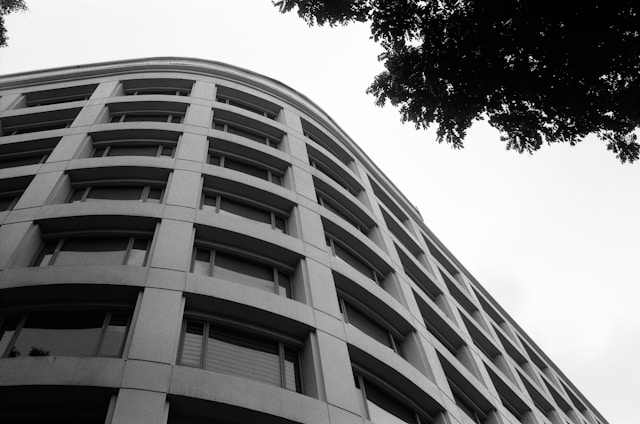In today’s fast-paced, ever-evolving world, building innovative infrastructure requires a combination of cutting-edge materials, sustainable practices, and data-driven technology. By applying modern engineering solutions, infrastructure can be more resilient, efficient, and environmentally friendly. Here are nine essential engineering tips to help you build a robust, innovative infrastructure, including insights into advanced practices.
1. Use Sustainable, High-Performance Materials
Sustainability is a core principle in modern infrastructure development, and using high-performance materials can reduce both environmental impact and long-term maintenance costs. Fiber Reinforced Polymer (FRP) is a leading option, known for its lightweight, durable, and corrosion-resistant properties. FRP is particularly valuable in infrastructure exposed to harsh environmental conditions, such as bridges, tunnels, and coastal structures, where it provides longevity without frequent repairs.
FRP is also highly customizable, which allows engineers to design elements specific to project needs, and its production generally consumes less energy compared to traditional materials like steel or concrete. Choosing sustainable materials like FRP helps create infrastructure that is both durable and environmentally responsible.
2. Leverage Smart Technology and Real-Time Monitoring
Integrating smart technology into infrastructure projects enables continuous monitoring and maintenance. By embedding sensors within structures, engineers can track critical factors like stress, vibration, and temperature. These real-time insights help anticipate maintenance needs, reducing the risk of sudden failures and extending the structure’s lifespan.
For example, FRP can be paired with smart sensors to monitor stress levels and detect potential wear in real time, particularly in high-impact areas such as bridge beams and towers. With smart monitoring technology, engineers can respond proactively to issues, optimizing infrastructure performance while lowering repair costs.
3. Embrace Modular and Prefabricated Designs
Modular and prefabricated construction is highly efficient and adaptable, reducing construction time and minimizing environmental disruptions. With prefabrication, infrastructure components are manufactured off-site, ensuring high precision and quality control before being assembled on-site. This approach shortens project timelines and increases worker safety by limiting on-site labor.
FRP type of construction is particularly compatible with modular designs, as FRP panels and structural components can be prefabricated and easily transported to the construction site. By using modular designs, engineers can create a scalable infrastructure that is both cost-effective and versatile, adapting seamlessly to future expansions or modifications.
4. Incorporate Renewable Energy Sources
Integrating renewable energy sources into infrastructure reduces dependency on traditional energy and supports sustainable development. Solar panels, wind turbines, and geothermal systems can be incorporated into various infrastructure elements, from roadways to buildings. Renewable energy integration not only reduces carbon emissions but also contributes to long-term operational savings.
Materials used for FRP type of construction, which provide natural insulation, can support energy efficiency by reducing temperature fluctuations within structures. Additionally, features like solar-powered lighting and renewable energy sources for heating and cooling can make infrastructure self-sustaining and environmentally friendly.
5. Focus on Resilience and Climate Adaptability
Modern infrastructure must be designed to withstand extreme weather events and changing climate conditions. Resilient infrastructure includes flood-resistant construction, stormwater management systems, and materials that can tolerate high humidity, temperature shifts, and other environmental challenges.
FRP is an excellent choice for resilience-focused projects due to its resistance to corrosion and moisture, making it ideal for structures in flood-prone or coastal areas. By incorporating climate resilience into the design phase, infrastructure projects can ensure safety and longevity, even in areas prone to extreme weather, providing lasting benefits for communities.
6. Prioritize Long-Term Maintenance and Lifecycle Planning
Lifecycle planning is essential for long-lasting infrastructure, helping to minimize downtime and reduce maintenance costs. By planning for regular inspections and selecting materials with low maintenance needs, engineers can avoid costly repairs down the line. FRP, for instance, is low-maintenance and highly durable, reducing the frequency and expense of future repairs compared to materials like steel, which can corrode over time.
Lifecycle planning also involves designing structures with easy access for inspections and repairs. For FRP construction, this might mean creating modular components that can be replaced individually or adding accessible inspection points. Considering maintenance from the start supports a more sustainable, cost-effective approach to infrastructure design.
7. Enhance Energy Efficiency Through Smart Building Design
Energy efficiency plays a significant role in sustainable infrastructure. Smart building designs that focus on natural lighting, ventilation, and temperature control help reduce energy consumption. Materials like FRP, which naturally provide insulation, contribute to maintaining stable indoor temperatures, reducing the need for excessive heating and cooling.
Moreover, smart HVAC systems, energy-efficient lighting, and well-insulated exteriors further improve energy efficiency.
8. Use Digital Twins for Enhanced Planning and Management
Digital twins—virtual replicas of physical structures—are increasingly valuable in infrastructure development, allowing engineers to simulate and optimize designs before construction even begins. These digital models provide a real-time, data-driven view of how the structure will respond under various conditions, allowing engineers to detect potential issues early and make necessary adjustments.
For instance, by creating a digital twin of an FRP bridge, engineers can simulate different load conditions, weather impacts, and maintenance schedules. This process enhances planning accuracy, mitigates risks, and supports long-term management by providing a comprehensive understanding of the structure’s performance. Digital twins are invaluable for infrastructure planning and optimization, ensuring that each project meets safety, performance, and sustainability standards.
9. Engage Community Stakeholders and Promote Inclusivity
Innovative infrastructure serves communities best when it addresses local needs and considers the perspectives of those who will use and maintain it. Engaging with community stakeholders early in the planning and design stages ensures the infrastructure aligns with the specific needs, preferences, and concerns of residents, businesses, and local organizations. Open dialogues help identify priorities, such as accessibility, safety, environmental impact, and cultural significance.
Incorporating inclusive design features, such as accessible pathways, public spaces, and adaptable facilities, makes the infrastructure more user-friendly and valuable to a wider range of individuals.
Building a fully innovative infrastructure requires a forward-thinking approach that integrates sustainability, smart technology, resilience, and efficient planning. By using advanced materials, leveraging data-driven technology, and prioritizing resilience, engineers can develop infrastructure that stands up to today’s demands and future challenges. These nine engineering strategies support the creation of sustainable, high-performance infrastructure that not only serves current needs but also supports long-term growth and environmental responsibility.

